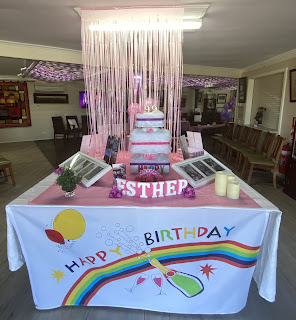Every year at this time I remember the service and sacrifice of Wing Commander Louis Spence whose name on a drinking fountain at Thornburgh College, Charters Towers, captured my attention when I was a school boy so many decades ago.
 |
| WGCDR Spence Receives a US Medal |
Initial Deployment and Early Missions
When the Korean War broke out in June 1950, No. 77 Squadron was based in Iwakuni, Japan, as part of the British Commonwealth Occupation Force.
The squadron was initially equipped with P-51D Mustang fighters, which had been used during World War II.
Upon the North Korean invasion of South Korea, 77 Squadron was rapidly deployed to assist United Nations (UN) forces.
First Combat Missions: On 2 July 1950, No. 77 Squadron became the first RAAF unit to see action in Korea. Their initial missions involved ground attack operations, close air support, and escort duties. The squadron’s Mustangs were particularly effective in attacking North Korean ground forces, supply lines, and infrastructure, disrupting the enemy’s advance.
Transition to Jet Aircraft
As the war progressed and the North Koreans began to receive more sophisticated aircraft from the Soviet Union, the squadron’s Mustangs became increasingly outclassed. In response, No. 77 Squadron transitioned to Gloster Meteor jets in April 1951, making them the first RAAF unit to operate jet fighters in combat.
Jet Operations: The Gloster Meteors were primarily used for air-to-ground operations, but they also engaged in air-to-air combat. However, they were soon outclassed by the faster and more manoeuvrable MiG-15s flown by the North Koreans and Chinese. This led to a shift in the squadron’s role from air superiority to ground attack missions.
Battle of Sunchon: One of the most famous engagements involving 77 Squadron occurred on 1 December 1951, during the Battle of Sunchon. Four Meteors were lost in a dogfight with MiG-15s, highlighting the challenges faced by the squadron in air combat. Despite the losses, the pilots displayed exceptional bravery and skill.
 |
| Louis Spence in his Mustang |
Casualties and Achievements: The squadron suffered significant losses during the war, with a total of 41 pilots killed and 7 taken as prisoners of war. Despite these losses, No. 77 Squadron was credited with destroying numerous enemy vehicles, trains, and infrastructure targets.
The squadron’s achievements earned them a reputation for professionalism and effectiveness, and they were highly respected by their UN allies. By the end of the war, they had flown over 18,872 sorties, dropping nearly 10,000 tons of bombs and firing over a million rounds of ammunition. Their contribution to the Korean War was significant, and their efforts were recognized with multiple awards and commendations, including the US Presidential Unit Citation.
The squadron’s involvement in the Korean War marked a significant chapter in the history of the RAAF, demonstrating Australia’s commitment to international security and its ability to adapt to new forms of aerial warfare. No. 77 Squadron’s legacy continues to be honoured in both Australia and South Korea.
"At the going down of the sun and, in the morning we will remember them. Lest we forget."
Photo credit: Australian War Memorial


